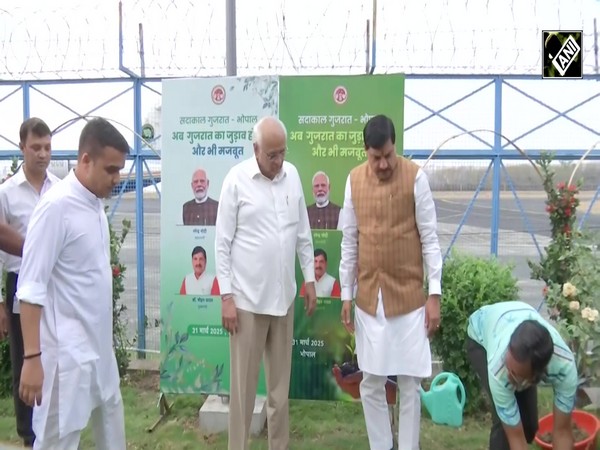Bhutan's political parties vow to boost country's income
Nov 21, 2023

Thimphu [Bhutan], November 21 : As Bhutan grapples with rising inflation, unemployment, mounting debt, declining reserves, stagnant investment, and insufficient government resources, all five political parties have synchronised their manifestos with a singular goal: transforming Bhutan into a high-income country by 2034, aligning with the ambitious 13th Plan, The Bhutan Live reported on Tuesday.
It reported that the elections in the Himalayan region are scheduled to kick off in July of the upcoming year. The 13th Plan outlines the audacious target of achieving a USD 5 billion economy by 2029 and doubling it to YSD 10 billion by 2034. However, this lofty ambition comes with a hefty price tag of over Nu 1 trillion in required investments.
The Bhutan Live reported that the political the Bhutan Tendrel Party (BTP) envisions an average growth rate of 12 percent or more over a decade, while Druk Phuensum Tshogpa (DPT) opts for an 8 percent average economic growth rate within five years. Druk Thuendrel Tshogpa (DTT) commits to a robust 10 percent annual real growth rate over the next decade.
Applying the rule of 70, achieving a 14 percent annual economic growth rate could catapult Bhutan's GDP to USD 5.8 billion by 2029. In 2022, Bhutan's GDP stood at USD 2.9 billion or Nu 227.81 billion, reflecting a growth rate of 5.21 percent. Notably, the economy witnessed a notable dip from the 7.78 percent observed between 2000 and 2010 to an average of 3.5 percent between 2010 and 2022.
The slowdown can be attributed to various factors, including a slackening in hydropower construction, decreased electricity production due to insufficient rainfall, and feeble growth in the manufacturing sector. The Covid-19 pandemic in 2020 exacerbated the situation, leading to a negative economic growth rate of 10.1 percent, The Bhutan Live reported.
To revitalize the economy, DTT and the People's Democratic Party (PDP) have proposed economic stimulus plans, with DTT suggesting Nu 10 billion and PDP a more substantial Nu 15 billion. BTP, on the other hand, has pledged to formulate and implement a national infrastructure plan with an estimated investment of Nu 50 billion in the initial three years.
Druk Nyamrup Tshogpa pledges to escalate FDI from Nu 43.3 billion to Nu 100 billion by 2029, as outlined in the 13th Plan. PDP sets a higher target with FDI of Nu 500 billion in the next five years, and DTT pledges a green channel for FDI of Nu 100 million and sources green financing of USD 1 billion over 10 years. BTP targets USD 1 billion in FDI by 2029.
Other commitments include reducing the trade deficit, with Druk Nyamrup Tshogpa (DNT) aiming for under 20 percent, BTP targeting 15 percent of GDP, and DTT and DPT providing tax incentives for exports to India and import substitutions.
With a trade deficit of 27.18 percent of GDP in 2022, Bhutan imported Nu 118.79 billion worth of goods against Nu 56.87 billion in exports.
The 13th Plan aims to create 1,000 high-end jobs annually in the digital economy, with a 10 percent share of the digital economy to GDP by 2029. BTT pledges full employment by 2029 and reduces youth unemployment below 10 percent, whereas DNT and PDP aim for 97.5 percent employment with 5,000 jobs in the digital economy.
The Bhutan Live reported the manufacturing sector's share of GDP is set to increase from 6 percent to 15 percent by 2029, with PDP targeting 30 percent and DTT 20 percent.
In the tourism sector, PDP aims to increase tourist arrivals to 300,000 annually, with 50 percent from third countries, while DNT targets 150,000 paying and 200,000 Indian tourists annually.
DTT promises to simplify the sustainable development fee (SDF) to encourage repeat visits, targeting an annual revenue of USD 500 million and 30,000 jobs by the third year. BTP and DPT also pledged to review the SDF to make it more affordable for visitors.
BTP also pledges to maintain inflation below 5 percent, addressing the recorded 7.35 percent in 2022.
Parties also aspire to bring down Bhutan's national debt, which has risen from 55.6 percent in 2011 to 134.8 percent by September 2023, amounting to Nu 272.97 billion, The Bhutan Live reported.
BTP and DPT aim to reduce interest rates for loans in consultation with the Royal Monetary Authority (RMA) while DNT aims to reduce interest rates in identified sectors like agro products, minerals, forest products, handicrafts, textiles, among others.
As per The Bhutan Live, PDP and BTP promised loan deferment support while PDP also promised to introduce special loan schemes tailored for businesses affected by the Covid-19 pandemic in consultation with the RMA.




















